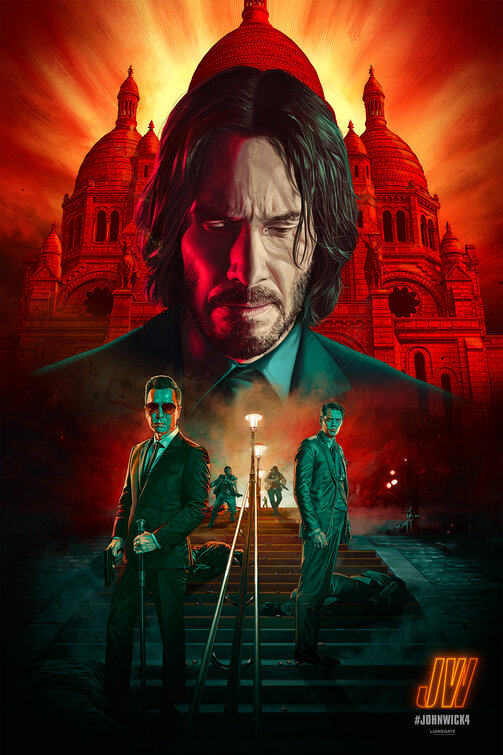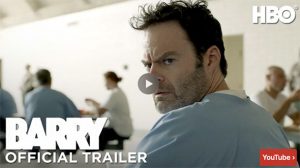
John Wick blazed onto the scene back in 2014. A sort of indie action flick, the film channeled Keanu Reeves‘s stoic energy with directors Chad Stahelski and producer David Leitch crafting a well-choreographed and gripping revenge story. In an era full of big-budget, CGI-driven blockbusters, John Wick was a welcome dose of more direct and physical effects and stunts that dazzled audiences. Like most good films nowadays, its success naturally led to a franchise. Nearly a decade in, John Wick is one of the few action franchises still going that is not based on a preexisting IP.
But like many franchises, after a fourth entry, it has shown signs of growing long in the tooth. What was once a grounded, gritty revenge story has bubbled into globe-trotting action overload, both for better and mostly worse. Repeating many of the same mistakes of Chapter 3, John Wick: Chapter 4 has amped up the action to a point of losing all touch with the realism and grit that made the first two films so refreshing.
It may seem a foolish thing to take this franchise to task for a lack of realism. Many would reply that realism has never been the point and that people come to these films for director Stahelski’s intensely and carefully-crafted action sequences. Indeed, each film of the franchise has featured scenes that are among the best action in the past two decades, and Chapter 4 is no exception. At nearly three hours in length, there are scenes consisting of nearly twenty-five minutes of constant fighting as Reeves’s Wick is put to the test. This entry features Wick deciding to take on the High Table directly (the mysterious international cabal of gangster-assassin leadership that Wick was once part of), personified by Bill Skarsgard‘s French Marquis Vincent de Gramont. Predictably perhaps, this means Wick has to take on and kill lots of people, resulting in many long sequences of killing.
Some of these are quite dazzling. Whether it’s neon corridors in a Japanese hotel while assassins fight with washizaki swords, pistols, and automatic rifles, or battling up an impossibly long set of steps, the film’s scenes are designed to keep the adrenaline constantly pumping. Two scenes are standouts. One features Wick battling assassins by weaving in and out of traffic at the famed Arc de Triomphe, mixing the series’ “gun-fu” in with the constant danger of cars hitting people. The other is an impressively long crane shot of a top-down battle between Wick and killers in an abandoned building that is a beauty to behold. Incendiary ammo that bursts fire in this scene is visually dazzling, to say the least.

Yet for all of the joy in how carefully these scenes are crafted and executed from a craft standpoint, the central irony is that an intentionally-excessive style choice has finally become overly excessive. The film spills over from highly thrilling into boring. The lack of realism stops dazzling and becomes dull.
The central problem of the script is that John Wick is no longer just a bad-ass super-assassin. Instead, he is now a full-on superhero. He is shot a lot in this film. A lot. And not just by pistols, but by high-caliber automatic rifles. He also once again is shot point-blank before leaping out of a three-foot building, crashing into a car, and then gets right back up and keeps running. The in-story excuse is the fancy suits he wears are lined with high-grade Kevlar, but it reaches a point where suspension of disbelief has become an outright hanging of disbelief.
When Wick can absorb anything and everything and keep on fighting, there’s no longer any sense of danger that Wick might lose a fight or get hurt, as there was in the first two films. He just keeps fighting and fighting and fighting and shooting and fighting. Scenes that are supposed to thrill instead become annoying and boring. Were the franchise set from the start as something more akin to a superhero flick where inhuman endurance and durability were present from the get-go, this would be easier to swallow. But Wick has gone from “Baba Yaga” into Winter Soldier.
The script also simply pretends that law enforcement doesn’t exist and that pedestrians would just ignore violent public gunfights. People don’t really run away from the scene of any of these battles. Gunfights that happen in public places like full night clubs, churches, and the aforementioned Arc de Triomphe are full of extras that barely react or simply don’t react to anything happening. To not even hear one police siren throughout the entire film is an outright insult to the audience’s intelligence.
Some may label these complaints nitpicks, but as a film driven primarily by action, it is important that this action have tension. The fear that Wick might finally lose or get hurt is important. When Wick comically tumbles down three full flights of stone steps in a physics-defying manner, it feels like more like a slapstick comedy scene than a big moment of defeat. Especially when Wick launches back to his feet with nary a broken bone. That none of these assassins even seem to care about being discrete anymore makes it feel like the movie takes place in some separate pocket universe.
It’s a shame, because there are lots of great moments in this film. Donnie Yen and Hiroyuki Sanada, two big Eastern action icons, are brought in and both dazzle. Despite the total absurdity of Japanese assassins facing their machine-gun wielding foes with samurai swords, it does look really neat. Yen’s character is a blind killer a la Daredevil or Zatoichi, and again, despite the ridiculousness of it, the film is deliberate in making it seem like the blind character is having to feel his way around. He comically puts motion-detector doorbell chimes in an area to help him fight. Skarsgard chews scenery delightfully and proves an appetizing villain. Ian McShane and Laurence Fishburne continue to be fun supporting characters to Wick. And despite some occasionally goofy line delivery, Reeves still conveys stoic rage quite well.

But the issues of Chapter 4 are apparent and repetitive. For a film that attempts a more profound and moving conclusion, and indeed tries to be a conclusion, it’s unfortunate that it really just falls on its face. Wick has never been a character that you really care about. His one defining characteristic was anger over his dead wife (and puppy) and the loss of a more innocent life that he could have had. Characters comment a few times on whether Wick even really wants a peaceful life. Rather than seriously wrestling with that idea, it’s shoved to the side until the end when we are given an ending that attempts to evoke Shane but without any of the emotion of that film. They’ve been ruthlessly beaten out of us after three hours of constant violence.
This is not an entirely negative review; Chapter 4 is still a solidly-made action film and a step above lots of work out there. But this is a review laden with disappointment. John Wick: Chapter 2 was the peak of the franchise, combining the fun, larger-than-life nature of the assassin network and its rules and code with a still mostly-grounded sense of action. In that film, it feels like Wick barely escapes Italian catacombs with his life and only really survives because he accidently crashes into a Continental hotel where “business” cannot be conducted. In Chapter 4, Wick survives because the script wills it so. But a script cannot will us into caring about a movie or having genuine stakes.



